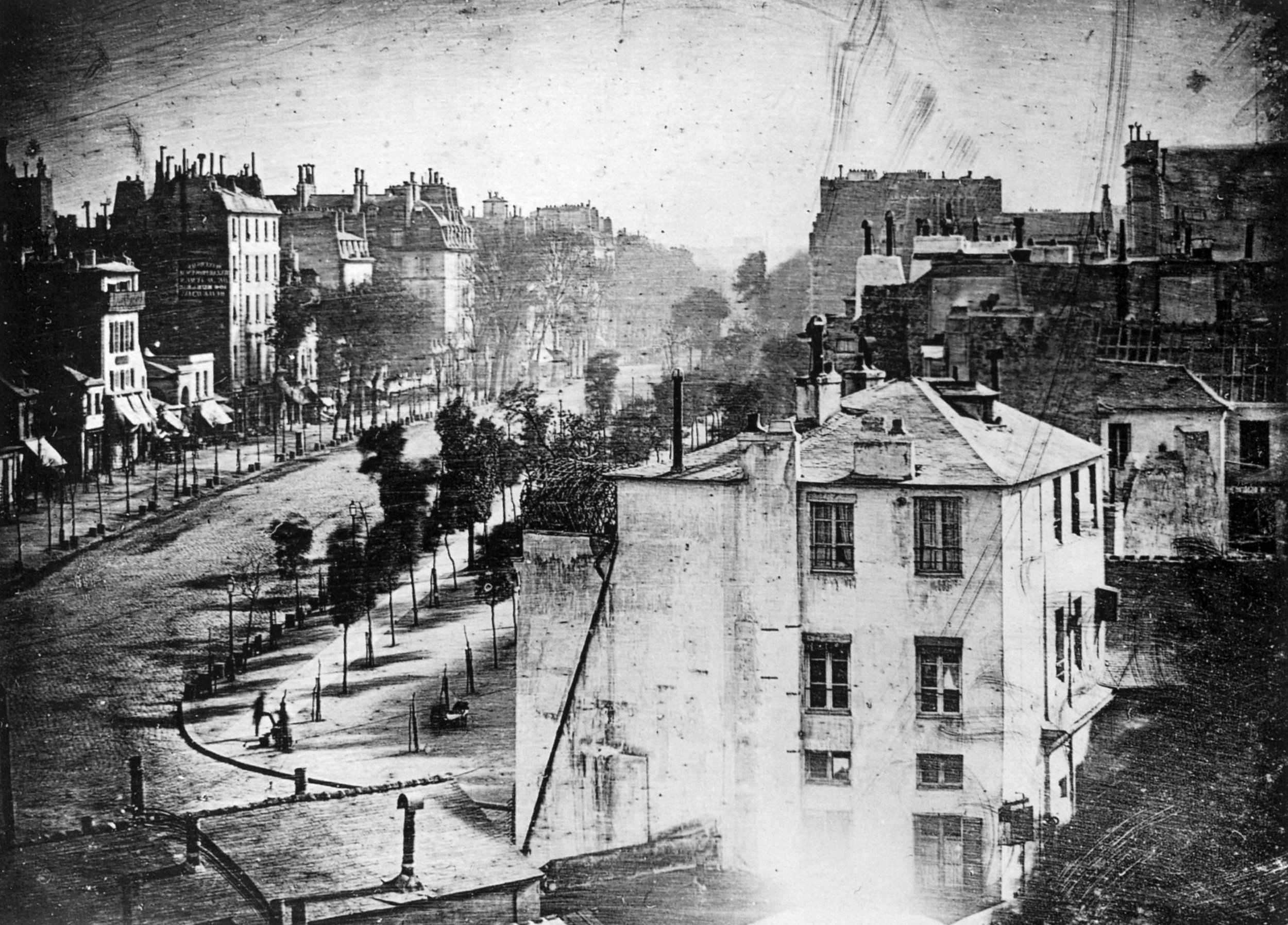10 Amazing Facts About Victorian Photography
01 / Photography’s Troubled Beginnings
In 1839 Louis Daguerre presented his Daguerreotype process at the French Academy of Science. Although there were many discoveries, processes and inventions over the previous several millennia, the Daguerreotype was arguably the first chemical photographic process to capture and record a photographic image. However shortly after Louis Daguerre presented his work, William Henry Fox Talbot — a British scientist, inventor and pioneering photographer — introduced his Calotype process, also claiming to have invented photography. The Calotype process was not a commercial success because Fox Talbot patented his work in an effort to recoup his considerable development costs. The Daguerreotype on the other hand was given to the world and became a popular early photographic process.
02 / The First Person Caught on Camera
This photo of Boulevard du Temple taken in 1838 by Louis Daguerre is thought to depict the first person ever caught on camera! The unidentified person must have been standing still for quite some time because the exposure time for the photograph was over 5 minutes.
Boulevard du Temple by Louis Daguerre
03 / Very Long Exposures!
The Victorians were pioneers of photography, but the cameras and photographic processes they employed were very slow by modern standards. Photographic exposures typically took between 10–30 minutes and subjects often had to be held in place with clamps and restraints! This is maybe why Victorians often appear to be overly stern or grumpy in their photographs.
04 / The Horse in Motion
Early photography played an important role in science, with scientists and early photography pioneers like Eadweard Muybridge using photography to study movement and motion. In 1878 Muybridge introduced his ground-breaking study The Horse in Motion which analysed how horses run, frame-by-frame.
The Horse in Motion by Eadweard Muybridge
05 / First Acts of Photographic Censorship
We’ve all seen the stories and heard the debates about photographic censorship, and yet this apparent modern-day problem was actually another Victorian invention. Roger Fenton who documented the Crimean War was not allowed to photograph the aftermath of the Charge of the Light Brigade which was a failed military action involving the British Light Cavalry. This was because the war was unpopular with the British public and photographic depictions of the battlefield were still considered taboo! Fenton was eventually allowed to take a photograph of the scene after the bodies had been removed. Similar acts of photographic censorship happened during the American Civil War.
Shadow of the Valley of Death by Roger Fenton
06 / Photographic Genres
Many of our modern photographic genres were actually created by the Victorians. Following chemical photography’s discovery the Victorians were quick to explore the potential of this new media and its various uses. Victorian photography encompasses everything from early documentary photography, photojournalism, portraiture, architecture, still life, advertising/product photography and even photographic pornography! Genres which were later pioneered in the Twentieth Century include fine arts photography and photographic propaganda!
07 / Early Colour Photography
We generally think about Victorian photography being black and white; and whilst it is true that most Victorian photographs were black and white, it was actually Victorian inventors and photography pioneers like James Clerk Maxwell and Thomas Sutton who experimented with early colour photographic processes. It was discovered that three black and white photographs of the same subject, and taken with colour filters, could be projected with coloured light, to create a colour image! Whilst this early colour photographic process was not true colour photography, the process of presenting and sharing colour photographs at the time was something of a novelty! This colour process was later perfected by photographers like Sergey Prokudin-Gorsky in the early-twentieth century.
Still Life with Rooster by Louis Ducos du Hauron
08 / Photography for the Masses
Early photography was mainly the preserve of the rich because photographic equipment and processes were expensive. It was not until the Eastman Kodak company introduced it’s Brownie series cameras in the late-Nineteenth Century that photography became available to the masses. Brownie series cameras were cheap and were sent away so the photographs could be developed and printed. Kodak continued its Brownie series long after the Victorian era, producing box cameras into the 1960s!
Kodak Brownie Series Camera
09 / 35 mm Photographic Film
Although many Victorian photographs were taken on glass or metal plates, it was during the Victorian era that photographic films like 35mm were developed. These were eventually accepted as standards and later become popular in the Twentieth Century and are still used this day!
10 / The Preserve of History
The Victorians quickly realised photography’s potential to document history and used sepia and selenium toning to preserve photograph prints. And whilst the preservative qualities of these processes is questionable; the look this toning created is something which has endured until this day, with social media platforms and apps digitally replicating these processes with filters.
Interested in history of photography? Don’t hesitate to check out my Skillshare class The Camera’s Journey Through Time: A Brief History of Photography








